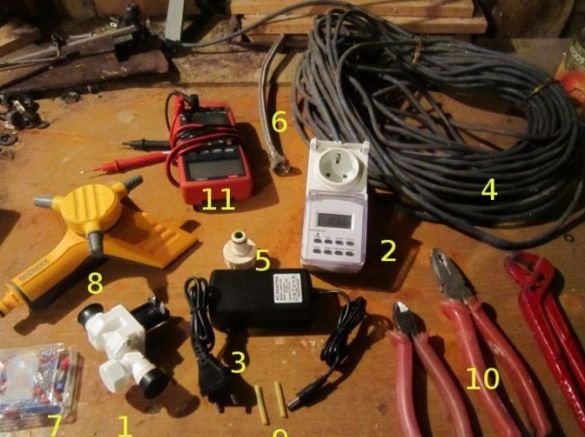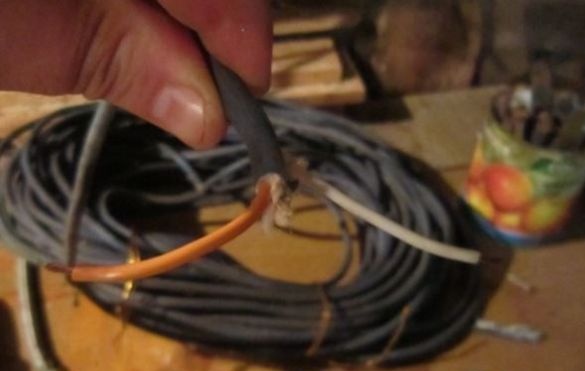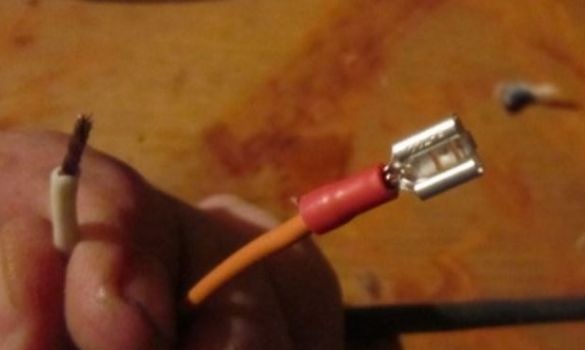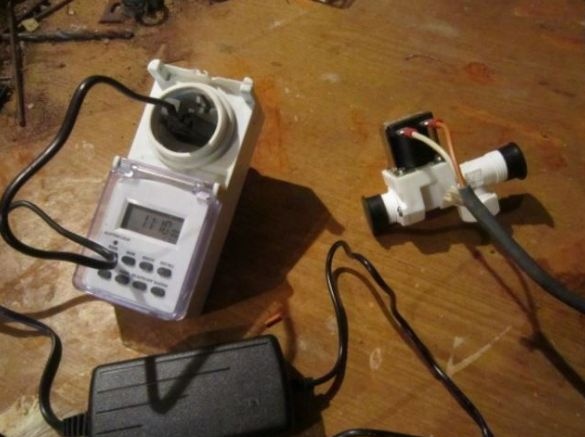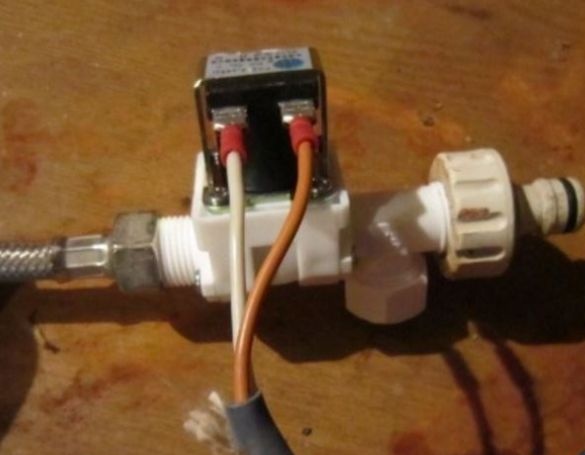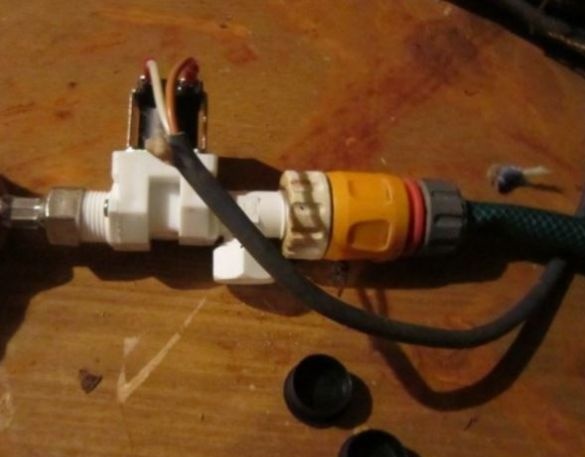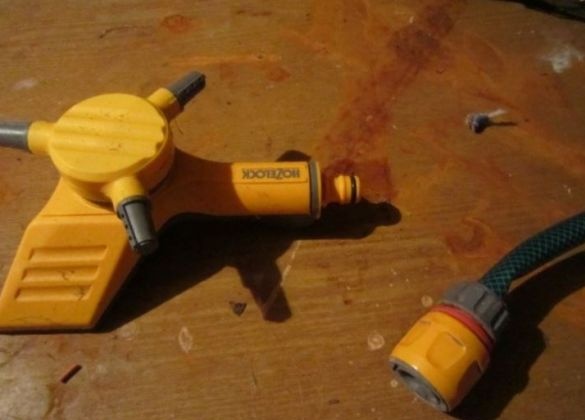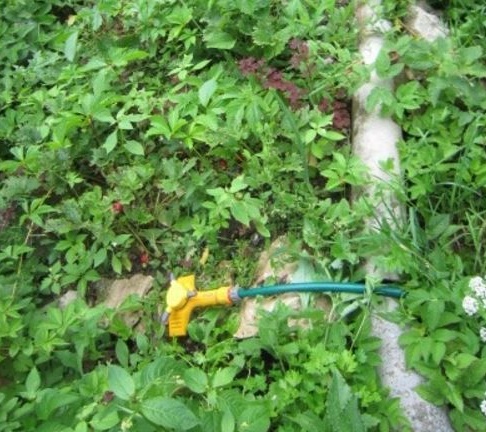
This project involves the use of an NT8048 solenoid valve with an appropriate voltage of 12V. The reason for this was two main factors:
1. The project is distinguished by electrical safety due to its low voltage. If water gets on the valve or touches with wet hands even with the power on, the system remains safe.
2. Further modification involves the presence of a battery with a voltage of 12V and a capacity of 15AH, so that the project will receive an autonomous power supply charge, which will withstand the load for a week.

Connection system:
1. The system is connected to the water supply of the proposed site.
2. The automatic watering system can be powered by current from any free outlet. It is better if this outlet is protected by a separate wire going from the distribution panel with an existing circuit breaker for low current operation. This will serve as additional security measures in the home electrical network.
Details required:
1) NT8048 valve with a corresponding voltage of 12V;
2) outlet electronic timer;
3) a network adapter with a voltage of 12V and a current of 3A (you can use others, because a current of 0.5A is enough for the valve to function);
4) an electric two-wire cable long, which will correspond to the distance between the outlet and the valve, taking into account the path of passage;
5) adapter for the Gardena hose connection system with 1/2 inch thread;
6) a hose with a nut at the end of 1/2 inch for the water supply line;
7) crimp terminals;
8) water spray - “spinner”;
9) pieces of heat shrink tube;
10) nippers, pliers and pincers will be required for connections and installation;
11) tester.
Let's start with the timer. Having studied the instruction manual for the timer, we fix the time of watering. You can set the duration individually later after the observation and analysis. We set it for 30 minutes.
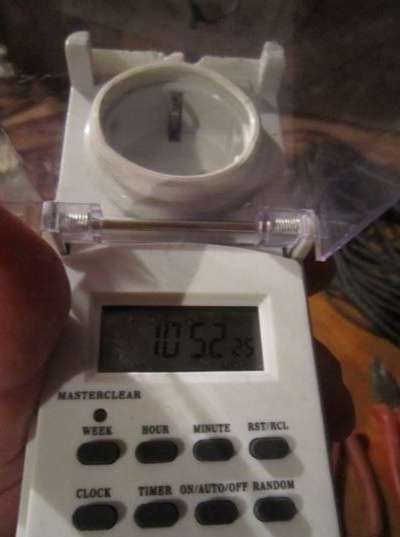
Using a pair of wire cutters, the plug from the low-voltage output should be disconnected from the mains adapter, but the plug for the 220V network should remain on the device. Strip the wired adapter output wiring and strip it off for now.
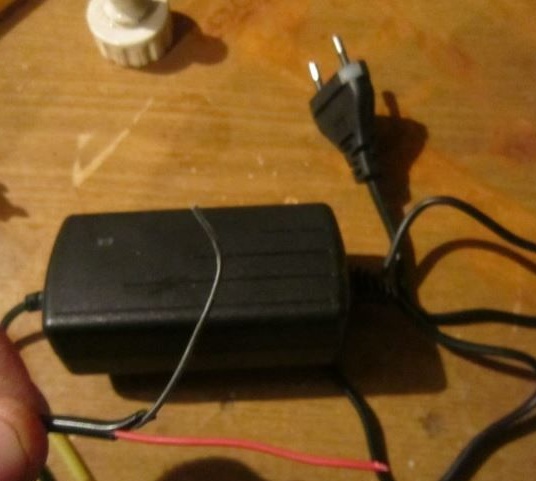

At one end of a two-core cable, we clean the wires and put on them pieces of heat-shrink tubing.
Now you can connect the adapter and cable wires together.
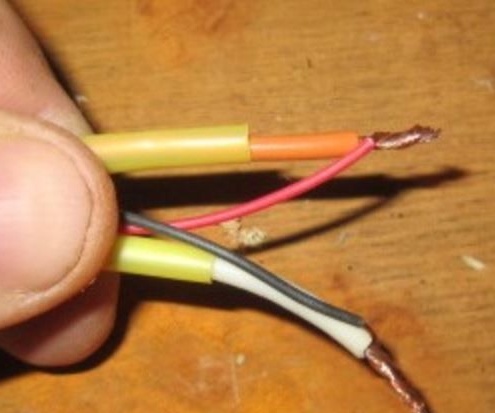
The connected wiring must be soldered with a soldering iron, now the connection points can be covered by the previously shrink-wound tube. In order for the tube to sit tightly, it needs to be heated.
We also peel the second side of the cable at the end and crimp the outputs with terminals.

Now you can assemble the electrical circuit by putting the terminals on the terminals of the solenoid valve.
Proceed to the water part. Now wires are attached to the valve. On both sides, remove the protective caps and attach the inlet hose to the inlet thread.
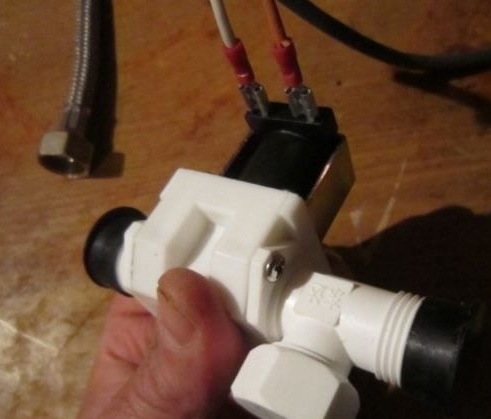
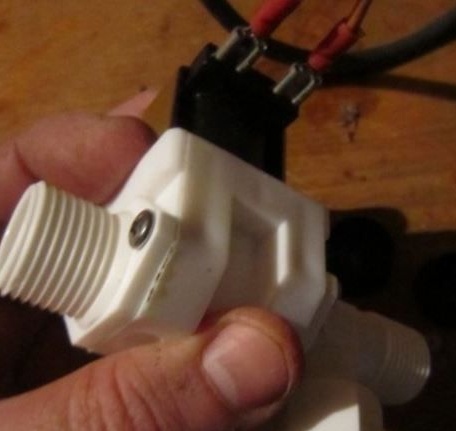
Before screwing on the nut, make sure that there is a rubber gasket inside.
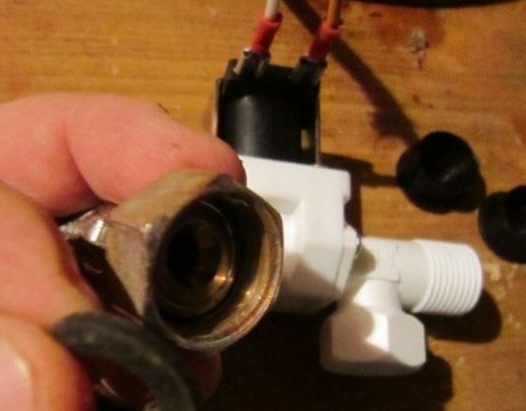
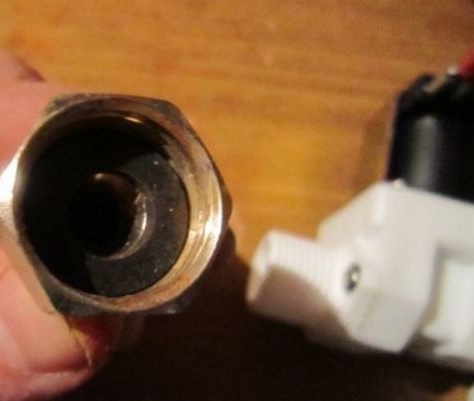
If everything is in place, connect the nut to the inlet thread and tighten it tightly.
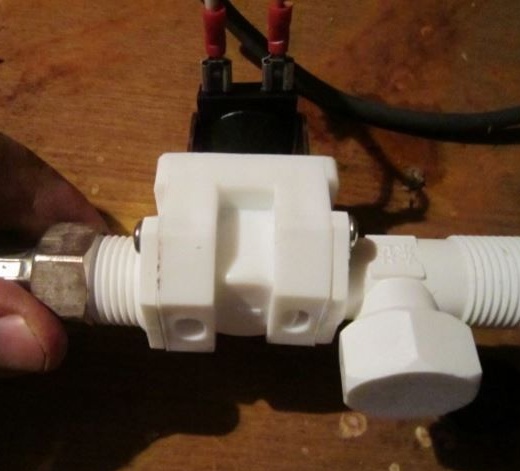

The adapter for connecting the garden hose is connected to the outlet and also screw tight.
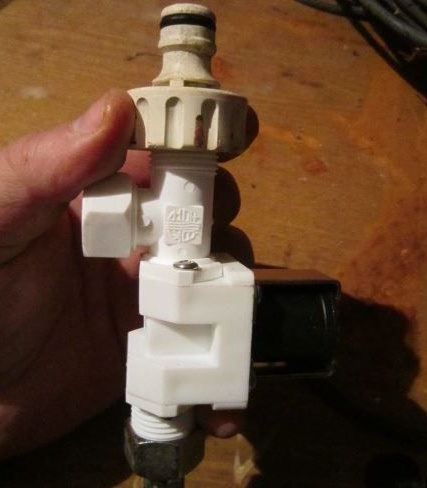
Now the automatic irrigation system is almost ready.
Install the valve in the intended place and connect the garden hose.
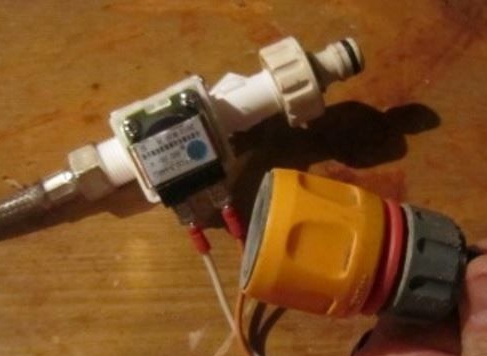
We turn on the timer in the socket.

It is necessary to route the hose to the place of irrigation and fix the sprinkler.
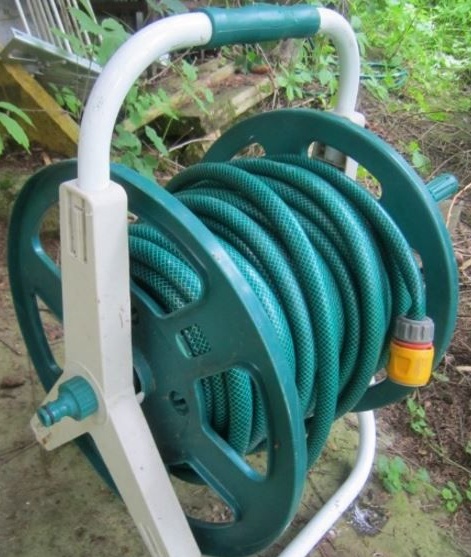

Everything, now you can enjoy your work, and evaluate the work done.
I wish you a rich and healthy harvest!
Advantages of the system:
- low cost;
- plain design.
Minor flaws:
- the inability to adjust watering to weather conditions;
- power from the network, you will not be able to control the current supply process in your absence;
- The timer only supports one valve, which limits watering.
I will try to remove all the shortcomings and flaws in the next versions of my system.
A few words about outlet timers.
There are two types of timers electronic and electromechanical. Electromechanical timers have a lower cost, but have a number of serious drawbacks. In the absence of electricity, the settings are lost, which leads to inconvenience and untimely watering. Therefore, the preference was given to a more reliable electronic timer system.

